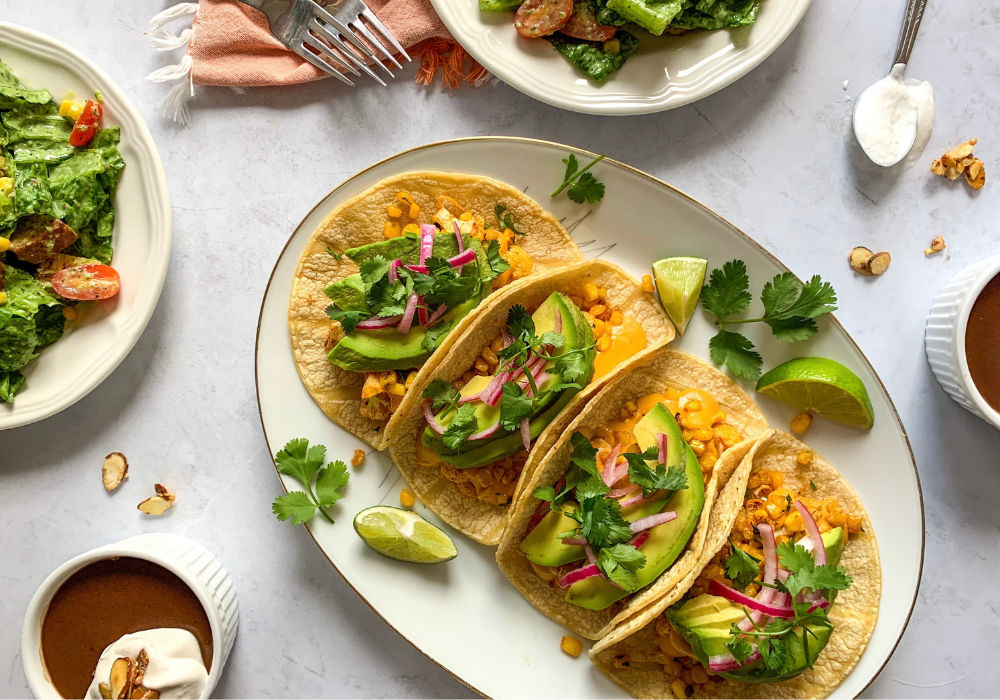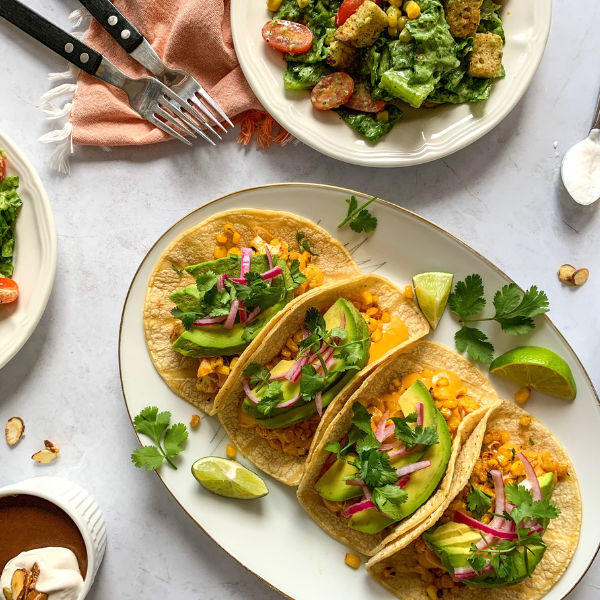So, you’re here because you want to eat a plant-based diet. But do you know where “here” is for you? Where are you exactly in your health and diet journey right now? Doing this prep work before transitioning to a whole food plant-based diet will go a long way to ensuring your success and save you from lots of frustration and overwhelm.
Knowing where you’re starting from means you can determine where you want to go.
Everyone starts from a different place, and that’s okay. The important thing is to find out where that place is for you. Be honest with yourself! There’s no shame in starting from the very beginning, getting back on track after a long break, or continuing down a long winding road. They’re all valid places to start.
The main thing is to get going! Once you take that first step, every step afterward becomes easier and easier.
1) Start by Assessing Your Current Diet
To reach your ideal diet and make your health goals a reality, you need to be able to measure your progress. This is because the only way to know how far you’ve come is to know where you’re starting from. To do this, take a good hard look at what your current diet looks like right now.
Answer these questions for yourself:
- What are you eating for breakfast every day?
- What about lunch?
- How about for dinner?
- Don’t forget snacks and sweets too!
NUTRITIONIST’S TIP: Try keeping a food journal for a few days to help you accurately record what you eat. It will give you a better understanding of what your current diet looks like.

What’s a food journal, you ask?
It’s a place where you note down everything you’ve eaten each day, including all your meals, snacks, drinks, and desserts. We tend to forget the little treats and snacks we eat between meals, so documenting everything you’ve eaten each day, and including the quantities, will help give you an accurate picture of where you currently are.
You can record your food journal entries in a notebook, on a scrap of paper, in your agenda, or on your phone. The place doesn’t really matter, just do what feels easiest to you.
HOT TIP: This task can be quite tedious, so I don’t recommend making this a regular practice or doing this exercise for more than a week. 3-7 days of food records will give you an accurate picture of your current diet. More isn’t better in this case!
Note that this exercise is NOT designed to make you feel ashamed of what you’re eating or ensnare you in some kind of misplaced conviction of the need for weight loss. Rather, it is here to give you an accurate picture of what your current diet looks like.
And if you’re thinking, “Please, I already know what I eat!”, don’t be so fast to judge! I had a former client do this food journal exercise, and before starting, she estimated that she ate 3 cups or more of white rice per day. After going through this exercise, she realized her daily white rice intake was closer to 1 cup per day–⅓ of her initial estimate!
So, before you do anything else for your health, spend a few days food journaling. I guarantee you’ll be surprised by the insights you gain!
2) Consider Your Plant-Based Diet Options
Now it’s finally time to look forward to your diet goals.
What is a whole food plant-based diet?
If you can answer this question fully, feel free to skip ahead to the next section. But my guess is your answer will be something like, “uhhh a super healthy vegan diet?”
Here’s the truth: a whole food plant-based diet is one that focuses on whole plant foods. Is it that simple? Yes, and no. This definition might make it seem like everyone’s plant-based diet will look the same and that there isn’t any wiggle room. Thankfully, neither of those things is true.
Each one of us has unique dietary requirements, health goals, likes and dislikes, cultural preferences, grocery budgets, and ingredients available to us. All this combines to create a plant-based diet that looks unique to each of us.
Plant-based vs plant-predominant vs plant-exclusive
When considering your diet goals, you may decide that a plant-based diet that includes some animal products (a plant-predominant diet) is the way to go for you, or you might choose to follow a plant-based diet that excludes all animal products (a plant-exclusive diet).
It’s only thanks to modern global food systems that we have the ability and opportunity to eat a 100% plant-based diet if we want to. This wasn’t possible not long ago when everyone ate what was local to them. I, for one, am so thankful for that opportunity!
Whatever you choose, know there’s no right or wrong answer here.
You decide what you want YOUR diet to look like.
Then, label it if the structure makes you feel more comfortable, or don’t. Your diet is not more or less valid if it has a specific name attached to it.
3) Nail Down Your Ideal Whole Food Plant-Based Diet
Now that you’ve learned what a plant-based diet actually is, and the many nuances within, it’s time for you to decide for yourself what your ideal diet looks like.

Don’t stress out on me! Your ideal diet can change over time, at a moment’s notice, or stay the same forever. The important thing is to have a goal diet in mind so you have something specific to work toward.
Take some time to map this out for yourself.
Take a few minutes now to visualize your ideal diet:
- What does it look like?
- What foods do you eat a lot of?
- How are those foods prepared?
- How much time do you spend in the kitchen?
- What kinds of cuisines do you enjoy?
Write it all down! No detail is too small.
The more time you spend getting clear on your diet goals now, the better you’ll be able to visualize where you want to go and the more directly you’ll be able to get there.
Celebrate Completing This Important Prep Work
Congratulations! You’ve invested this time to take a good hard look at your current diet AND get clear on what your ideal diet looks like. That means you now have a clear path from point A (your current diet) to point B (your ideal diet). By doing this groundwork, you’ve laid a strong foundation to accomplishing your diet and health goals that few people take the time to do. Go you!
All that’s left now is to put one foot in front of the other and walk down that path! (If you’re looking for support walking down that path, check out this blog post on the ten steps to thriving on a plant-based diet!) You’ve got this!



